Germanic four-wheel drive all-wheel drive armored cars from the Second World War. Part of 1. Austrian armored car ADGZ in the service of the Third Reich
This very original car was developed and produced by Austro-Daimler (Wiener Neustadt, part of the arms concern Steyr-Daimler-Puch from 1935). Design began in July 1931 of the year as part of the creation of the army three-axle cargo family ADG. The first prototype unarmored prototype armored vehicle was built in 1933 year. To control the chassis used a continuously variable transmission “Voith” with a six-speed hydraulic gearbox (three speeds forward and backward), borrowed from the four-wheel drive three-axle tractor ADAZ. The first armored model was made in 1934 year. Experienced ADAZ had single wheels and an octahedral rotating turret with a Schwarzlose M7 / 12 machine gun, 8 mm caliber. Two more machine guns were placed at opposite ends of the hull. However, the Defense Ministry demanded that the design of the vehicle be changed (to reduce the length of the hull), and the final version of the vehicle was introduced in January 1935. In December of the same year, the production of the first batch of 12 armored vehicles began.
The ADGZ armored car had an almost symmetrical hull design - in each tip there was a place for the driver, course guns and headlights were installed. The armored personnel carrier frame had a parallelogram shape (to reduce the mass of the whole structure, the spar frame was replaced with a spinal profile frame with peripheral push tubes), which greatly facilitated the operation of the steered front and rear wheels, and thanks to a special transmission, the car could move forward and backward at maximum speed. This quality was especially valuable when conducting combat operations on city streets and narrow forest and country roads, where it is quite difficult to make a U-turn. The ADGZ body is welded from armor plates of thickness from 6 to 14,5 mm, which were installed at angles 5 - 75 degrees. Armor defended the crew from small arms weapons and was considered quite sufficient when using the machine in police operations. The crew of the ADGZ armored car consisted of 7 people: the commander, gunner, loading guns, two machine-gunners, two drivers (later, after adopting the vehicles into service with the SS, the place of the second driver was reduced). For the landing of the crew served four doors, made in the sides of the hull. The four-axle ADGZ armored car had the following dimensions: length - 6260 mm, width - 2160 mm, height - 2560 mm. Ground clearance - 270 mm.
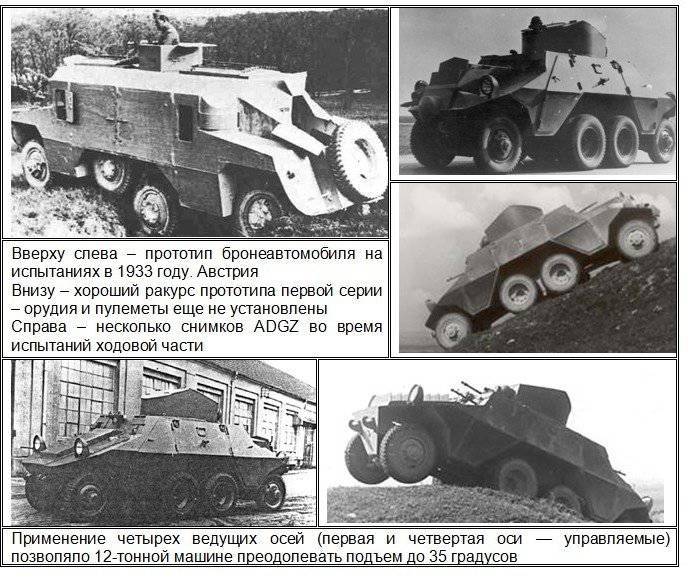
The carburetor 6-cylinder engine “AUSTRO-Daimler” М612 (cooling - liquid, displacement - about 12 l., Borrowed from the artillery ADAZ) was placed in the rear part. The engine, which develops power up to 1800 hp at 150 revolutions per minute, allowed the 12-ton car to move along the highway at speeds up to 70 km / h. The power reserve was 450 km. High fuel consumption (about 95 liters per 100 km) required the installation of 4 tanks, the total capacity of which was 210 liters. In addition to the engine aft housed the gearbox. In addition to the gearbox described above, the transmission included a range-reducing gear and a special Wandler type clutch clutch. The car had hydraulic brakes. At the ADGZ armored personnel carrier all axles were leading. Since the weight increased after the installation of cannon armaments in the center of gravity area, the wheels of the two middle axles were made gable. As already mentioned the first and fourth axes were manageable. The wheel formula 8х8 allowed the car to overcome rise to 35 degrees.
In the original version, which was used by the Austrian army, the main armament of the ADGZ armored car consisted of an automatic gun "Solothurn" caliber 20 mm and machine gun "Schwarzlose" caliber 7,92 mm installed in ball bearings separately in a welded cylindrical tower with a gable roof. In addition, two more Schwarzloze machine guns were installed in the front and rear hull sheets. The weapon was induced with the help of shoulder rest. Ammunition: 5000 ammunition for machine guns and 250 shells for the gun. Observation of the battlefield was conducted through the observation slits, closed with bullet-proof glass.
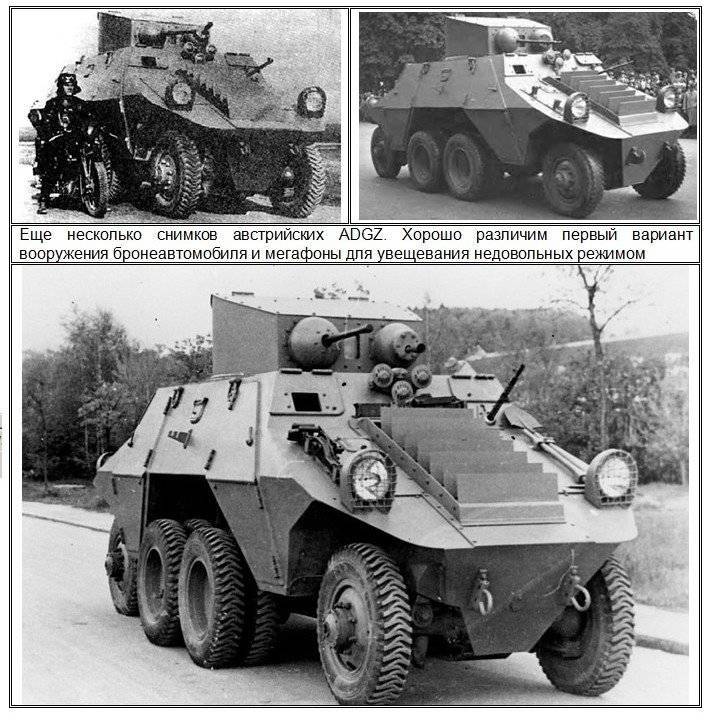
As mentioned earlier, the ADGZ pre-production armored car consisted of 12 vehicles. Serial production of these machines was very limited - the Austrian army received only 1937 ADGZ armored cars before 27. After the Austrian Anschluss, held in 1938, all military equipment and weapons were transferred to the Wehrmacht. In the German Wehrmacht, this machine was given the designation "М35 mittlerer Panzerwagen". Initially it was planned that they would be sold to Bulgaria or Romania, but because of the lack of armored vehicles with equipment and a small number of this idea was abandoned. After the revision, which was reduced to the replacement of Austrian cannons and machine guns with German 20-mm cannon KwK 35 and MG-34 machine guns ADGZ armored cars were transferred to SS police units.
In 1941, the Reichsfuhrer SS Himmler issued an order to Steyr for the manufacture of ADGZ armored vehicles for the SS troops. Already at the beginning of 1942, 25 units assembled from components stored at the enterprise were transferred to the unit. On the Eastern Front, ADGZs were used to guard rear communications, as well as to combat partisan detachments. In particular, ADGZ was armed with the 7th SS Volunteer Mountain Division “Prinz Eugen” (“Prince Eugene”), operating in the territory of Yugoslavia. It is known that one armored car ADGZ January 16, 1943 captured the 3rd tank army during the liberation of Rossosh (Voronezh region), and another in February 1944 was shot down by the 1st Ukrainian partisan brigade S. A. Kovpak during the battle of Siedliyce (Poland). All ADGZ armored vehicles were destroyed in battle.
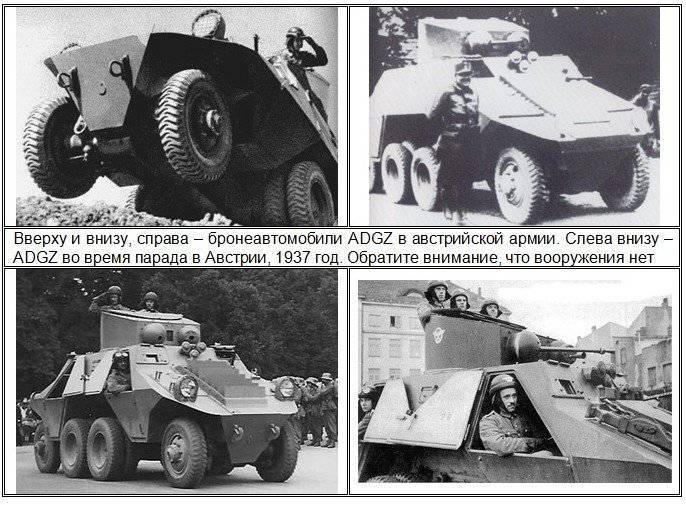
Tactical and technical characteristics of armored car ADGZ:
Combat weight - 12 t;
Length - 6260 mm;
Width - 2160 mm;
Height - mm 2560;
Armament:
Solothurn gun turret caliber 20 mm (replaced by KwK 35 L / 45 caliber 20 mm), Shwarzlose machine gun caliber 7,92 mm (MG-34 caliber 7,92 mm);
The front and rear of the case - 2 machine gun Shwarzlose 7,92 caliber mm (MG-34);
Ammunition:
Gun - 250 shots;
Machine guns - 5000 cartridges;
Engine: carburetor 6-cylinder petrol M612, power at 1800 rpm 150 hp;
Maximum speed - 70 km / h (on the highway);
Power reserve - 450 km (on the highway)
Crew - 7 man (later reduced to 6).
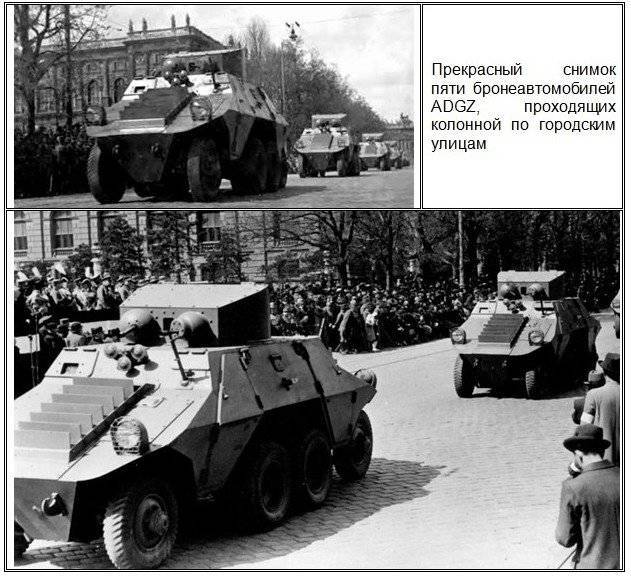
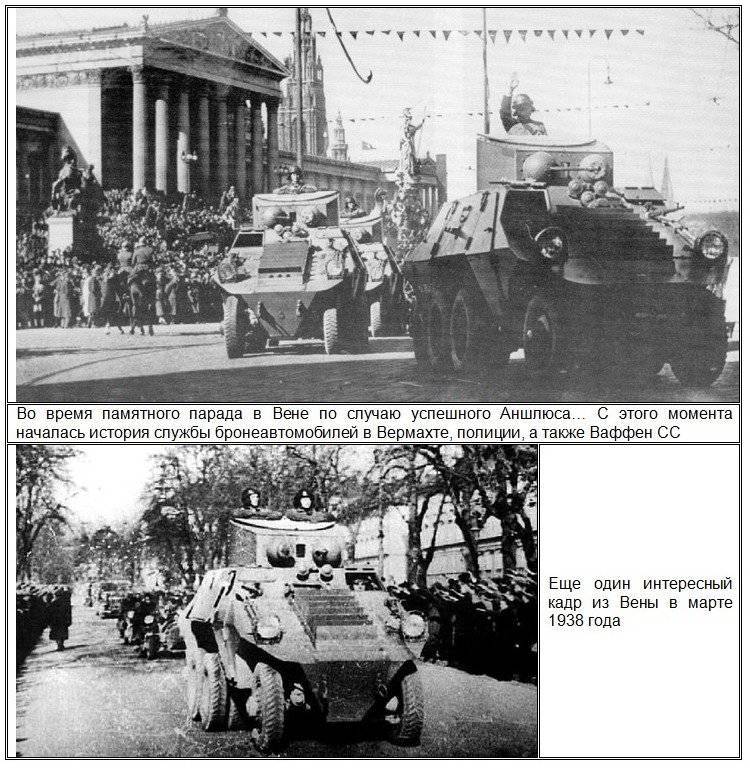
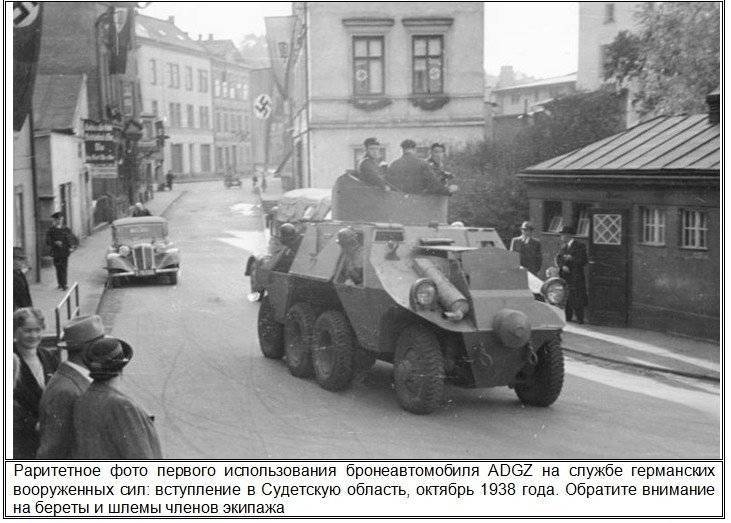
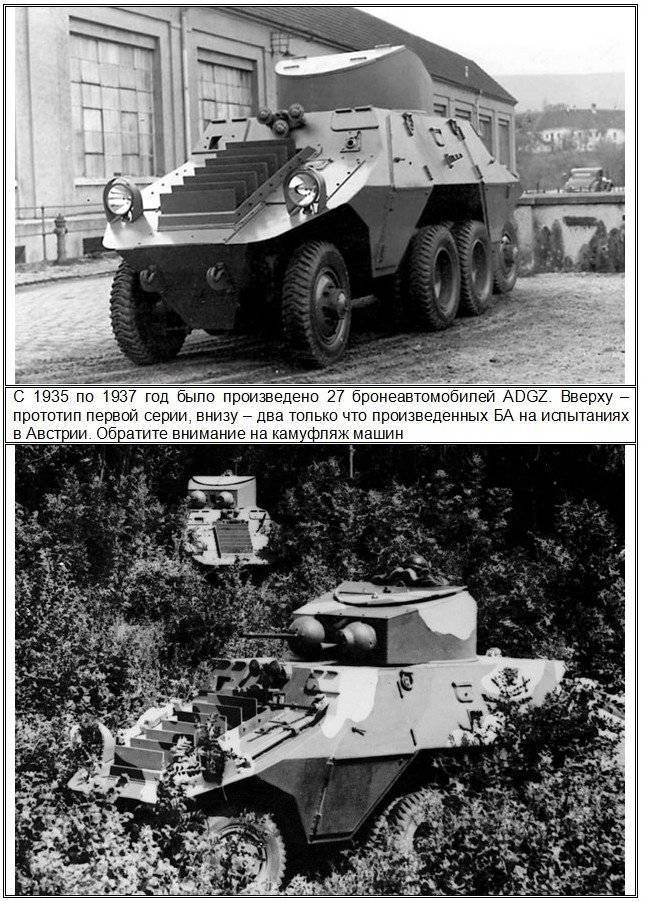
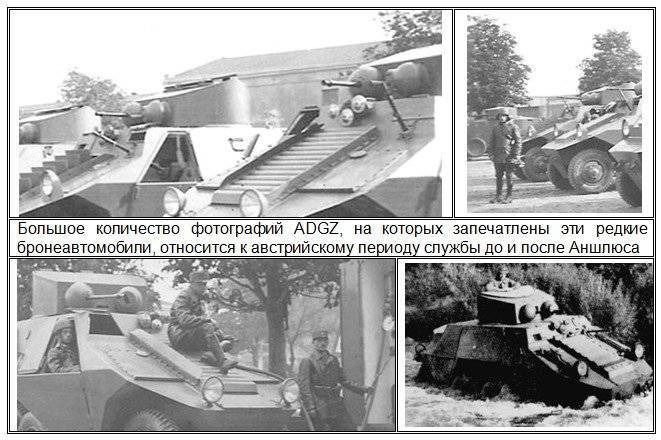
Based on materials:
http://voenoboz.ru/
http://www.aviarmor.net
http://www.weltkrieg.ru
http://militaryalbum.blogspot.com
http://armoredgun.org/
Information